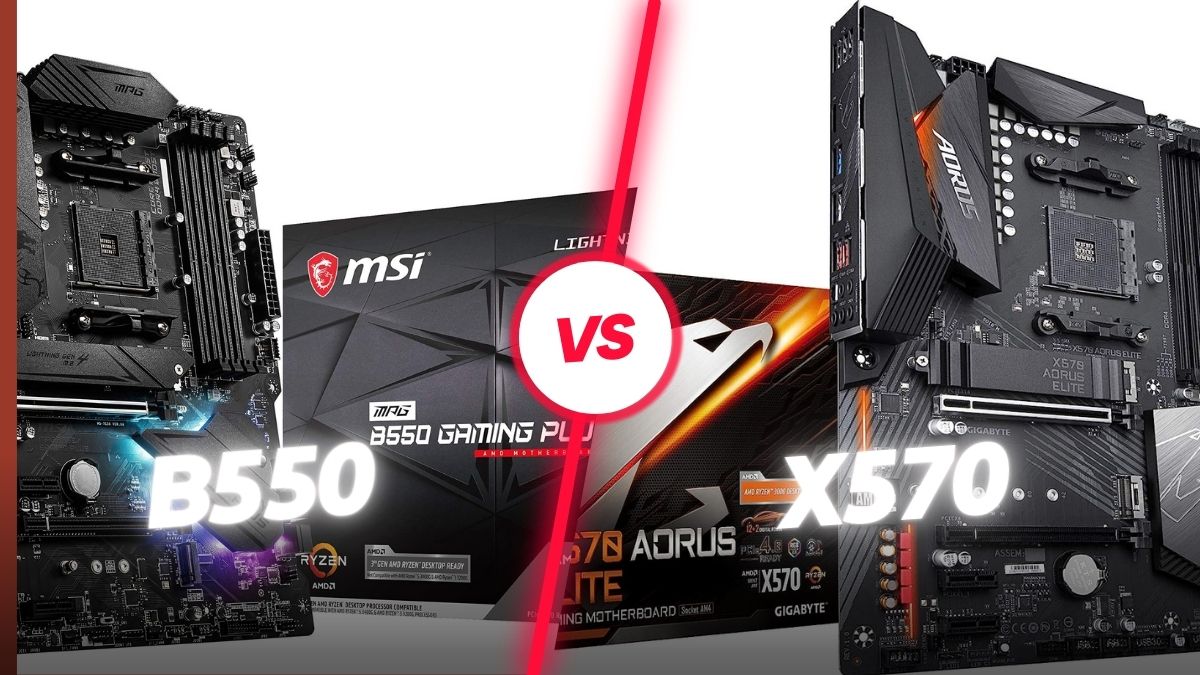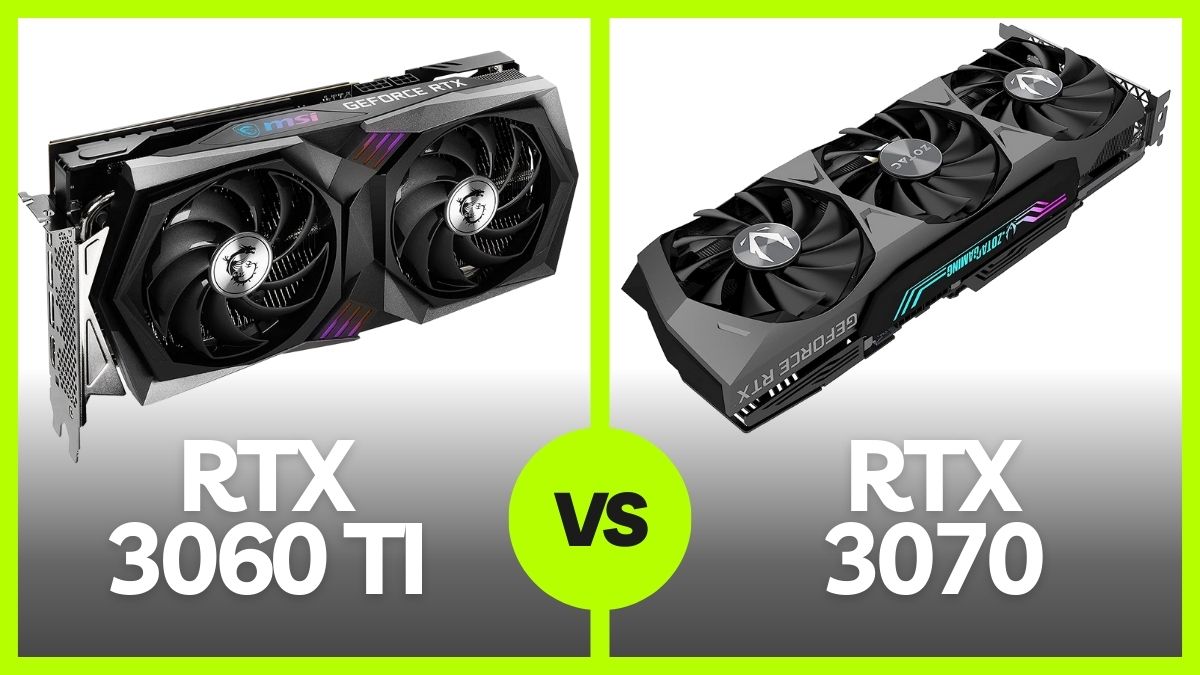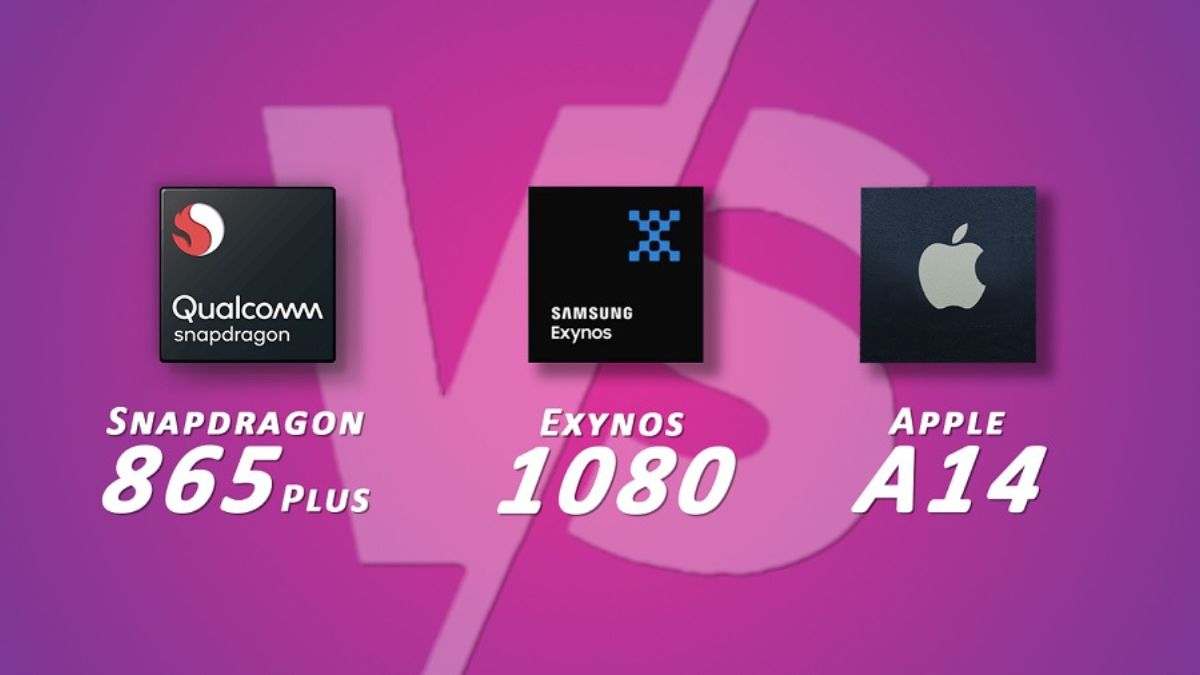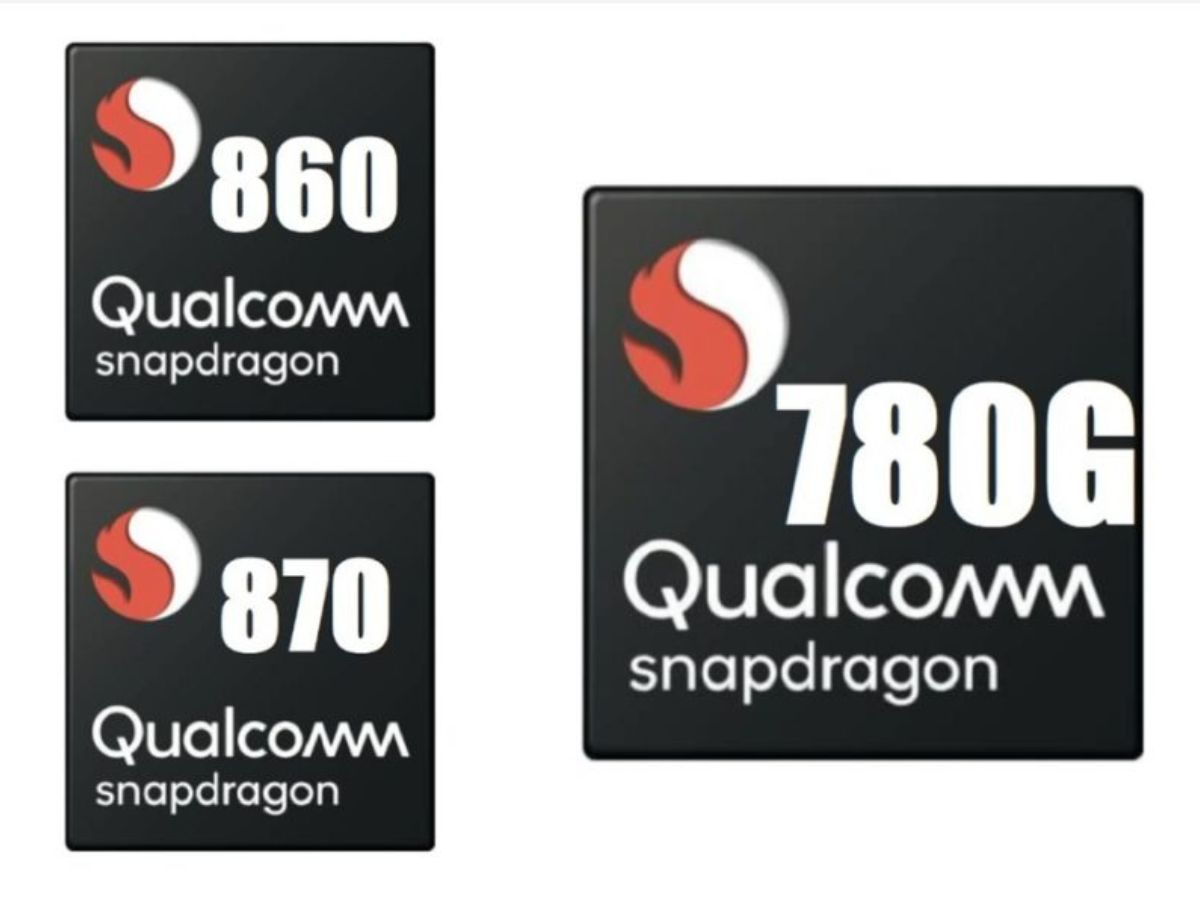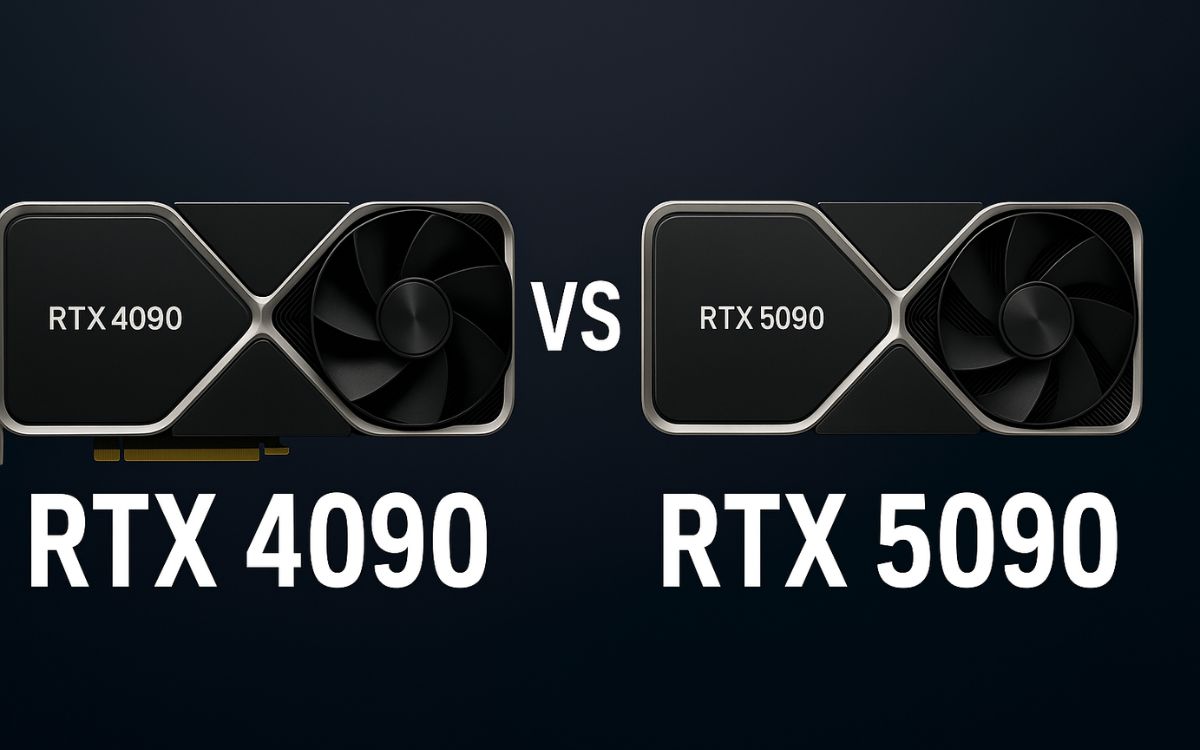
The world of high-end graphics cards is undergoing a massive transformation. NVIDIA’s GeForce RTX 4090, once the undisputed king of GPUs, is now facing an emerging powerhouse — the GeForce RTX 5090. With architecture changes, AI leaps, and massive memory bandwidth boosts, the 5090 is poised to redefine what’s possible in gaming, AI research, and 3D content creation.
In this detailed article, we’ll compare the RTX 4090 vs RTX 5090 across architecture, specs, real-world use cases, power consumption, ray tracing, and future-proofing — giving you everything you need to know before making a choice.
Also Read: RTX 5080 vs RTX 4080 Comparison
RTX 4090 vs RTX 5090: Full Specifications side-by-side
Let’s compare side-by-side specifications of RTX 4090 vs RTX 5090:
| Feature | RTX 4090 | RTX 5090 |
|---|---|---|
| Architecture | Ada Lovelace | Blackwell |
| Process | 4nm | 3nm |
| Tensor Cores | 1321 AI TOPS | 3352 AI TOPS |
| Ray Tracing Cores | 191 TFLOPS | 318 TFLOPS |
| CUDA Cores | 16,384 | 21,760 |
| VRAM | 24 GB GDDR6X | 32 GB GDDR7 |
| Base Clock | 2.23 GHz | 2.01 GHz |
| Boost Clock | 2.52 GHz | 2.41 GHz |
| Memory Speed | 21 Gbps | 28 Gbps |
| Memory Bus | 384-bit | 512-bit |
| Ray Tracing | 3rd Gen RT cores | 4th Gen RT cores |
| AI Features | DLSS 3 (Frame Generation) | DLSS 4 |
| Power Draw | 450W | 575W |
| Memory Bandwidth | 1008 GB/sec | 1792 GB/sec |
Raw Performance
When it comes to raw performance, the RTX 4090 has dominated the GPU market since its launch, offering unparalleled power for 4K gaming, 3D rendering, and AI-driven tasks. However, the RTX 5090 is set to raise the bar dramatically, promising a significant generational leap.

The RTX 4090, with its 16,384 CUDA cores and 24 GB of GDDR6X memory, can handle virtually any game at 4K resolution with ultra settings, often delivering frame rates well above 60 FPS. It also excels in ray tracing, leveraging its third-generation RT cores to maintain smooth gameplay even in the most demanding titles like Cyberpunk 2077 and Alan Wake 2. For content creators, the 4090 slashes rendering times in software like Blender and speeds up AI workloads significantly.
Enter the RTX 5090, boasting 21,760 CUDA cores — a 32% increase over the 4090 — and a massive 1792 GB/sec memory bandwidth thanks to faster GDDR7 VRAM and a wider 512-bit bus. Early benchmarks suggest the 5090 could deliver 50% to 70% higher performance across both rasterized and ray-traced workloads compared to the 4090. The fourth-generation RT cores and updated tensor cores with 3352 AI TOPS dramatically improve ray tracing fidelity and AI-enhanced features like DLSS 4.
In gaming, the RTX 5090 is expected to comfortably achieve 100+ FPS at 4K ultra settings in most modern AAA titles without heavily relying on upscaling techniques. Fully ray-traced games, which strain even the 4090, will likely run far smoother on the 5090, delivering a more immersive experience with higher visual fidelity. For professional users, the 5090’s advancements mean faster AI model training, quicker rendering, and greater stability under heavy multitasking or simulation workloads.
While the RTX 4090 remains incredibly capable and still overpowers most gaming needs today, the RTX 5090 is poised to take a commanding lead, especially in next-gen gaming, AI, and creative workflows. For enthusiasts and professionals seeking the absolute best performance without compromise, the RTX 5090 will clearly be the new gold standard.
Gaming Benchmarks
When comparing gaming performance between the RTX 4090 and the RTX 5090, the difference is nothing short of impressive. The RTX 4090, based on the Ada Lovelace architecture, has been the undisputed leader in 4K gaming, delivering exceptional frame rates across even the most demanding titles. However, early benchmarks and performance projections for the RTX 5090 suggest a substantial leap forward, placing it in a different league altogether.
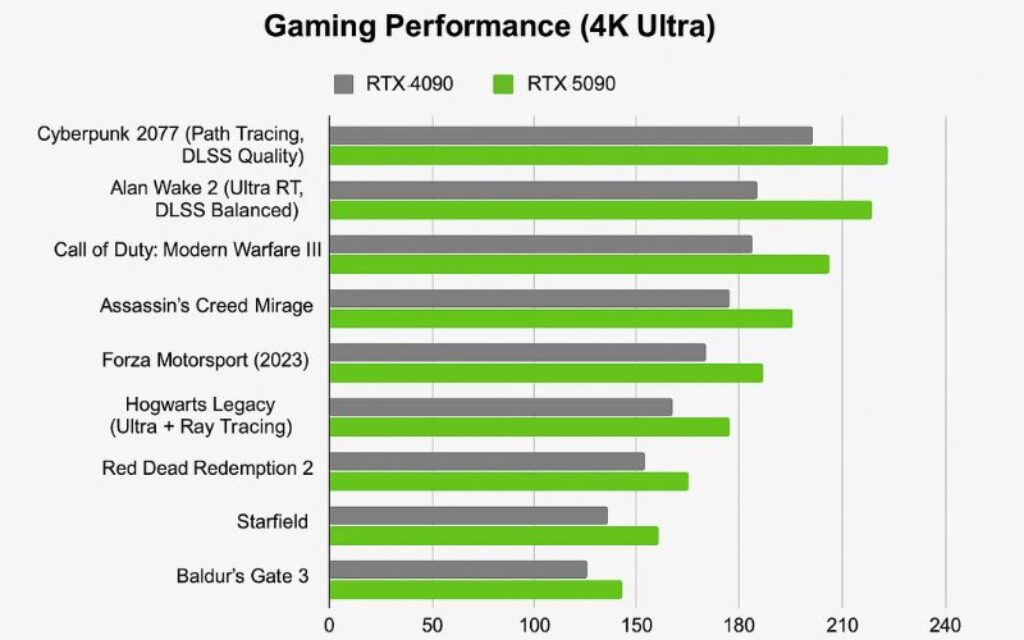
In Cyberpunk 2077 with full path tracing enabled and DLSS set to Quality mode, the RTX 4090 achieves an average of around 70 frames per second (FPS) at 4K ultra settings. The RTX 5090, leveraging its fourth-generation RT cores and more powerful AI capabilities, is projected to push this number up to 110 FPS, representing a 57% increase in performance. Alan Wake 2, another highly ray-traced and resource-intensive title, shows similar trends. Where the RTX 4090 maintains an average of 65 FPS with Ultra Ray Tracing and DLSS Balanced, the RTX 5090 is expected to soar to around 102 FPS, offering smoother gameplay and better visual fidelity.
Games that rely more on traditional rasterization also benefit greatly from the newer GPU. In Call of Duty: Modern Warfare III, the RTX 4090 can sustain approximately 140 FPS, whereas the RTX 5090 is expected to deliver an impressive 210 FPS, marking a 50% uplift. Open-world RPGs like Assassin’s Creed Mirage and Hogwarts Legacy similarly show gains of over 50%, with the RTX 5090 handling dense environments, complex lighting, and expansive textures far more effortlessly. Forza Motorsport (2023) sees a rise from 155 FPS on the 4090 to a projected 240 FPS on the 5090, making full use of high-refresh 4K displays.
Even heavily CPU-dependent or partially optimized games like Starfield and Red Dead Redemption 2 benefit from the RTX 5090’s broader memory bus and improved computational power. In Starfield, performance jumps from 78 FPS on the RTX 4090 to an expected 120 FPS with the RTX 5090. Meanwhile, Red Dead Redemption 2 moves from 115 FPS to around 175 FPS, enhancing smoothness in cinematic open-world sequences. Competitive titles such as Fortnite in Unreal Engine 5, with all next-gen features like Lumen and Nanite activated, also reveal a significant boost, from 85 FPS to about 135 FPS, making a tangible difference for fast-paced gameplay.
Overall, across a broad set of AAA games at 4K ultra settings, the RTX 5090 consistently delivers a 50% to 60% increase in frame rates compared to the RTX 4090. These gains are especially pronounced in ray-traced games, where the next-generation RT cores and DLSS 4’s superior frame generation and reconstruction technology allow for smoother, sharper visuals without compromising responsiveness. In essence, the RTX 4090 remains an excellent choice for current high-end gaming, but the RTX 5090 sets a new benchmark for ultra-high-performance gaming, pushing well beyond 100 FPS even in the most graphically intensive scenarios.
Artificial Intelligence (AI)
When it comes to Artificial Intelligence (AI) workloads, the RTX 4090 already set a high standard at its launch. Built on the Ada Lovelace architecture, it features highly efficient Tensor Cores capable of accelerating AI tasks like deep learning model training, inferencing, real-time AI image generation, and AI-enhanced gaming features such as DLSS 3 Frame Generation. With around 1321 AI TOPS (trillions of operations per second), the RTX 4090 offers substantial capabilities for both researchers and creative professionals working in AI fields. Whether running large language models, training neural networks, or handling real-time AI upscaling, the 4090 delivers exceptional throughput, often outperforming older workstation-grade GPUs like the A100 in certain mixed precision workloads.
However, the RTX 5090 is poised to push AI capabilities even further. Based on the Blackwell architecture and manufactured using an advanced 3nm process, the RTX 5090 is expected to feature roughly 3352 AI TOPS — more than double that of the RTX 4090. This jump isn’t just about raw power; the 5090 will introduce next-generation Tensor Cores, optimized for newer AI models that rely heavily on mixed precision and sparsity techniques. The RTX 5090 will also better accelerate transformer-based workloads, which dominate modern AI applications from ChatGPT-like models to generative AI tools like Stable Diffusion and MidJourney. Tasks that would previously take hours to fine-tune or generate on the RTX 4090 could be completed in significantly less time on the RTX 5090.
In gaming, the AI improvements are just as critical. The RTX 5090 brings DLSS 4, the next evolution of Nvidia’s AI-driven super-resolution technology. While DLSS 3 on the 4090 already uses AI to generate intermediate frames and boost performance without sacrificing visual quality, DLSS 4 on the 5090 promises better temporal coherence, sharper details, and lower latency, especially in highly dynamic scenes. Beyond gaming, the 5090’s enhanced AI performance benefits 3D artists, animators, and engineers who rely on real-time AI-assisted rendering, upscaling, and simulation.
Overall, while the RTX 4090 remains a monster for AI workloads today, the RTX 5090’s leap in AI-specific processing power, memory bandwidth, and software optimization places it far ahead for anyone seriously investing in next-generation AI development, training, and deployment.
Final Verdict
The RTX 4090 remains a technological marvel in 2025, but the RTX 5090 is set to redefine high-end gaming and professional GPU performance with monumental improvements across every metric: AI, ray tracing, raw horsepower, and memory bandwidth. For those who want the absolute best and are willing to pay the premium (and power) costs, the RTX 5090 will be the GPU to beat.
However, for most users, especially those gaming at 1440p or lower, the RTX 4090 (or even the 4080 Super) remains more than sufficient. Ultimately, the choice comes down to how much you want to future-proof your system and how much you value next-gen AI and ray tracing capabilities.


